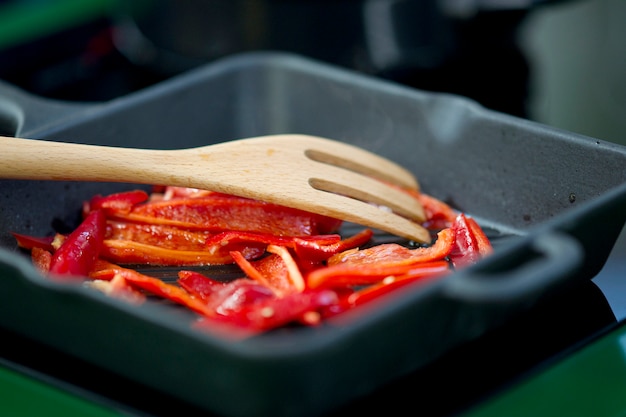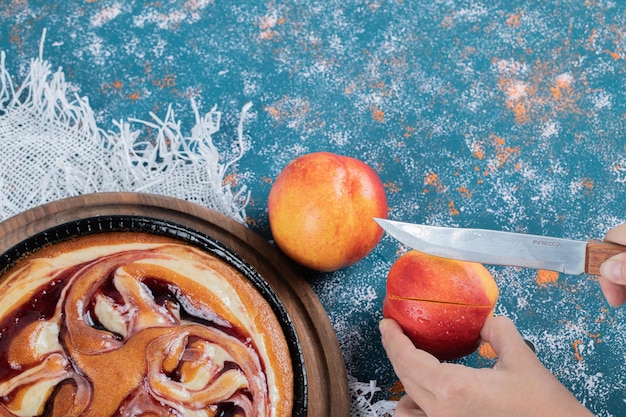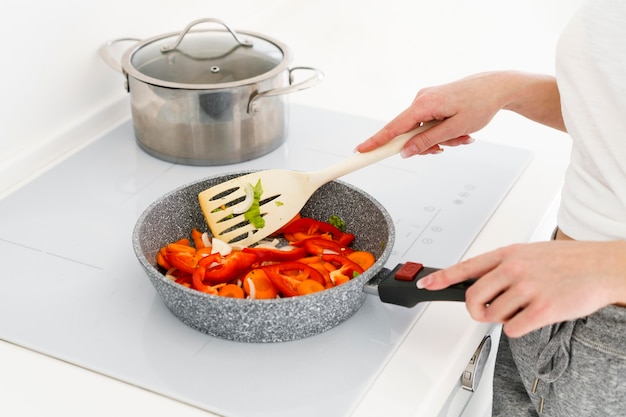There's something undeniably special about cracking open a juicy crab leg and savoring the sweet, delicate meat. It's a culinary adventure that transports you to the seaside, evoking memories of summer days and salty breezes. But let's be honest, cooking crab legs can seem intimidating. Fear not! I'm here to guide you through this crabsolutely delightful journey, sharing tips, tricks, and my personal experiences along the way.
(Part 1) Choosing the Perfect Crab Legs: Finding Your Perfect Catch

From Market to Table: A Quest for Quality
The journey begins at the market. As a seasoned seafood enthusiast, I always make a beeline for the fishmonger. They're like the wizards of the sea, brimming with knowledge about the freshest catches. I love chatting with them, asking about the origins of the crab legs, their fishing practices, and how to choose the best ones. It's all about finding quality and ensuring ethical sourcing.
A Crabsolutely Delicious Selection: Snow Crab, King Crab, and Dungeness Crab
The world of crabs is vast, but when it comes to delicious legs, three stand out: snow crab, king crab, and Dungeness crab. Snow crab, with its delicate, sweet flavour, is a classic crowd-pleaser. I often find myself reaching for a snow crab leg when I want a light and elegant meal. King crab, on the other hand, boasts a firm, meaty texture and a slightly sweet, almost buttery flavour. It's a bolder option, perfect for a hearty feast. And then there's the Dungeness crab, a Pacific Northwest favourite known for its rich, almost briny flavour. Each one offers a unique culinary experience, so don't be afraid to explore!
Unveiling Freshness: Looking for the Right Signs
Before you bring your crab legs home, give them a good look over. The shell should be firm and bright, with a glossy finish. A dull or slimy shell can indicate that the crab legs aren't as fresh. And don't be afraid to give them a gentle squeeze. They should feel firm and springy. If they're mushy or feel limp, it's best to pass. Remember, you're looking for the best possible quality, and a little bit of inspection goes a long way.
(Part 2) Preparing for the Crabfest: Setting the Stage for Your Feast

Cleaning and Prepping: A Simple Yet Crucial Step
Once your prize crab legs are in your possession, it's time for a little pre-cooking prep. First, rinse them thoroughly under cold running water to remove any excess salt and debris. Then, I carefully check for any sharp bits of shell or spines. A pair of kitchen shears comes in handy for this step, ensuring a safe and enjoyable eating experience.
The Big Decision: Steaming or Boiling? Choosing Your Culinary Path
Now comes the exciting part – choosing your cooking method! The decision is yours, and it all comes down to personal preference. I find steaming to be a gentler approach, preserving the delicate flavour and resulting in a light and delicate texture. But sometimes, I crave a bolder flavour and a slightly firmer texture. That's when I opt for boiling. It's a bit like choosing between a subtle herbal tea and a rich, robust coffee – each offers a distinct sensory experience.
The Equipment: Gathering Your culinary arsenal
Whether you choose steaming or boiling, you'll need a few key pieces of equipment. For steaming, a large pot with a steamer basket is essential. A large pot will suffice if you're boiling. A kitchen thermometer is also handy for ensuring your water reaches the right temperature. And don't forget your trusty crab crackers! These handy tools are essential for cracking open those tough shells. A set of serving tongs and a few bowls for dipping sauces round out your culinary arsenal. You're getting ready for a feast, so make sure you're well-equipped!
(Part 3) Steaming: A Gentle Embrace of Flavor

Steaming Secrets: Unveiling the Delicacy
Steaming is my go-to method for crab legs. It's gentle on the delicate meat, allowing its natural flavour to shine through. I start by filling the pot about halfway with water. Next, I bring the water to a rolling boil. Then, I add a touch of flavour to the steaming process: a couple of tablespoons of salt, a few sprigs of fresh herbs like dill, parsley, or even bay leaves. The herbs infuse into the steam, adding an extra layer of aroma and taste.
Laying Down the Crab Legs: A Culinary Tapestry
Now comes the moment of truth! I carefully arrange the crab legs in the steamer basket, making sure they're not overcrowded. Then, I gently lower the basket into the pot, ensuring it sits securely above the boiling water. I cover the pot tightly, allowing the steam to work its magic. The steaming time depends on the size and thickness of the crab legs. Typically, 10-15 minutes is enough for smaller legs. For larger legs, you might need to add a few extra minutes.
The Perfect Test: When the Crab is Ready
To check if your crab legs are done, carefully lift one out of the steamer basket. The meat should be firm and opaque, and the legs should feel warm to the touch. If the meat feels mushy or the legs are still cold, they need a little more steaming time. Once they're cooked to perfection, remove them from the steamer basket and let them rest for a few minutes before serving. This allows the meat to cool slightly and helps maintain its delicate texture.
(Part 4) Boiling: A Hearty Embrace of Flavor
Boiling Basics: A Classic Approach
Boiling is another excellent method, delivering a more robust flavour and a slightly firmer texture. It's a classic way to cook crab legs, offering a comforting familiarity. Start by filling a large pot with water. Then, bring the water to a rolling boil – the key is making sure the water is hot enough. When the water is bubbling vigorously, you're ready to add the crab legs.
Seasoning the Water: A Symphony of Flavour
I love to add a touch of seasoning to the boiling water. A couple of tablespoons of salt, a few sprigs of fresh herbs like bay leaves or thyme, and even a splash of white wine or lemon juice can elevate the flavour of the crab legs. The flavours infuse into the meat, creating a more complex and satisfying taste.
Submerging the Crab: A Culinary Dive
Carefully lower the crab legs into the boiling water, making sure they're fully submerged. The boiling time depends on the size and thickness of the legs. For most crab legs, 10-15 minutes is a good starting point. Larger legs might require a few extra minutes.
The Tell-Tale Sign: When the Crab is Ready
To check for doneness, use a pair of tongs to carefully remove a crab leg from the pot. The meat should be firm and opaque. If the meat is still translucent or feels mushy, it needs a few more minutes. Once the legs are cooked through, use the tongs to carefully remove them from the pot and transfer them to a serving platter. Let them cool for a few minutes before serving, allowing the meat to settle and maintain its delicate texture.
(Part 5) Unleashing the Flavour: Delicious Dipping Sauces
A Dip for Every Mood: A Palette of Possibilities
A dipping sauce can transform a seafood dish into a culinary masterpiece, and crab legs are no exception! I'm always experimenting with different dips, but some classics always hold a special place in my heart.
The Classic: Melted Butter
Melted butter is a crab leg classic for a reason. It's simple, it's rich, and it complements the delicate flavour of the crab meat perfectly. I keep it simple, melting a stick of unsalted butter in a small saucepan over low heat. Then, I add a squeeze of fresh lemon juice and a pinch of salt for a touch of brightness. For a hint of spice, you can even add a pinch of paprika or cayenne pepper.
A Touch of Spice: Garlic Butter
For a bolder flavour, garlic butter is always a winner. I melt a stick of unsalted butter in a saucepan and then add a few cloves of minced garlic. I cook the garlic for a few minutes until it's fragrant but not browned. Then, I add a pinch of salt and pepper to taste. The creamy, garlicky goodness is a perfect complement to the sweet, delicate crab meat.
A Tangy Delight: Cocktail Sauce
Cocktail sauce adds a tangy and spicy kick to crab legs. While you can find pre-made cocktail sauce at most grocery stores, I prefer to make my own. I simply mix together ketchup, horseradish, and a dash of Worcestershire sauce. Adjust the proportions to your taste and feel free to add a pinch of cayenne pepper for a touch of heat.
A Sweet and Savoury Blend: Honey Mustard
For those who enjoy a touch of sweetness, honey mustard is a delightful choice. It balances the sweet and savoury notes perfectly. I like to combine honey, Dijon mustard, and a pinch of salt. The creamy, tangy sauce is a delightful complement to the delicate crab meat.
(Part 6) Cracking the Code: Mastering the Art of Shell Cracking
The Essential Tool: The Crab Cracker
Crab crackers are a must-have when it comes to enjoying crab legs. They're specially designed to crack open those tough shells and release the sweet, delicate meat inside. You'll find a variety of crab crackers available, so choose one that feels comfortable in your hand and offers a good grip.
The Cracking Technique: A Step-by-Step Guide
Here's how I approach cracking crab legs like a pro: First, I identify the "hinge" of the leg, the point where the leg bends. I place the leg on a sturdy surface, making sure the hinge is facing away from me. Then, I position the crab cracker over the hinge and apply firm, even pressure. The shell should crack open with a satisfying "snap". If you find the shell is particularly tough, you can use the blunt end of the crab cracker to gently tap the shell until it cracks.
Extracting the Meat: A Delicate Dance
Once the shell is cracked, it's time to extract the meat. I use a crab fork, which has two prongs designed to easily extract the meat from the shell. I carefully insert the fork into the crack in the shell and gently pry the meat out. Sometimes, the meat comes out in large pieces, other times it's a bit more delicate. It's part of the fun, a little bit of an edible treasure hunt!
The Final Touch: Dipping and Enjoying
Now comes the moment you've been waiting for: dipping and enjoying! I take a piece of crab meat and dip it generously into my chosen sauce. The warm, buttery sauce mingles with the sweet, delicate flavour of the crab meat, creating a symphony of taste in my mouth. It's a moment of pure culinary bliss.
(Part 7) Leftovers: Turning the Tide of Deliciousness
The Art of Leftover Bliss
Let's face it, crab legs are so delicious, you might end up with some leftovers. But don't fret! leftover crab legs can be transformed into a variety of delicious dishes.
A Savoury Surprise: Crab Salad
Crab salad is a classic way to use leftover crab legs. I like to mix the crab meat with mayonnaise, celery, onion, and a pinch of salt and pepper. You can add other ingredients like chopped tomatoes, capers, or a dash of hot sauce for extra flavour. Serve it on bread, crackers, or even lettuce leaves for a delightful appetizer or light lunch.
A Creamy Delight: Crab Dip
Another fantastic way to use leftover crab legs is to make a creamy crab dip. I simply mix the crab meat with cream cheese, sour cream, and a dash of Worcestershire sauce. I bake the mixture in a small casserole dish until it's bubbly and golden brown. Serve it with crackers, tortilla chips, or even vegetables for a delicious and satisfying appetizer.
A Warm and Hearty Treat: Crab Soup
For a warming and comforting meal, consider making crab soup. I start by sautéing some onions, celery, and carrots in butter. Then I add the leftover crab meat, chicken broth, and milk. I simmer the soup for a few minutes until the flavours meld together. Serve it hot with a dollop of sour cream or a sprinkle of fresh parsley.
(Part 8) FAQs: Unraveling the Mysteries of Crab Legs
Q: Can I freeze crab legs?
A: Yes, you can freeze crab legs. I recommend freezing them raw, as freezing cooked crab legs can cause the meat to become mushy. To freeze raw crab legs, wrap them tightly in plastic wrap and then place them in a freezer-safe bag. frozen crab legs can last up to 3 months in the freezer.
Q: How do I know if crab legs are bad?
A: If the crab legs have a strong fishy odour, or if the shell is slimy or discoloured, they're likely bad. Also, if the meat is mushy or discoloured, it's best to avoid them. When in doubt, it's always better to err on the side of caution.
Q: How long can I store cooked crab legs in the fridge?
A: I recommend storing cooked crab legs in the refrigerator for no more than 3 days. Store them in an airtight container or plastic wrap to prevent them from drying out.
Q: Can I eat the shell of crab legs?
A: It's not recommended to eat the shell of crab legs, as it can be tough and difficult to digest. The shell is primarily for protection and doesn't contain much nutritional value.
Q: How do I store crab crackers?
A: I like to store my crab crackers in a drawer or a designated storage container. This helps keep them clean and prevents them from getting lost or damaged.
(Part 9) The Final Bite: A Culinary Adventure Awaits
cooking crab legs is more than just a meal, it's an adventure! From selecting the perfect crab legs to choosing your favourite dipping sauce, there's a world of possibilities waiting to be explored. So, get ready to embrace the deliciousness, crack open those shells, and savour the moment! Happy Crabbing!
Everyone is watching

Prime Rib Roast Cooking Time Chart: Per Pound Guide
Cooking TipsPrime rib roast. Just the name conjures images of lavish dinners, crackling fires, and hearty laughter. It’s ...

How Long to Bake Potatoes in the Oven (Perfect Every Time)
Cooking TipsBaked potatoes are a staple in my kitchen. They're incredibly versatile, delicious, and surprisingly easy to m...

Perfect Rice Every Time: The Ultimate Guide to Cooking Rice
Cooking TipsAs a self-proclaimed foodie, I've always been a bit obsessed with rice. It's the foundation of countless cuisi...

The Ultimate Guide to Cooking Asparagus: Tips, Techniques, and Recipes
Cooking TipsAsparagus. The mere mention of this spring delicacy conjures up images of vibrant green spears, crisp and burs...

Ultimate Guide to Cooking the Perfect Thanksgiving Turkey
Cooking TipsThanksgiving. Just the word conjures up images of overflowing tables laden with delicious food, the scent of r...
